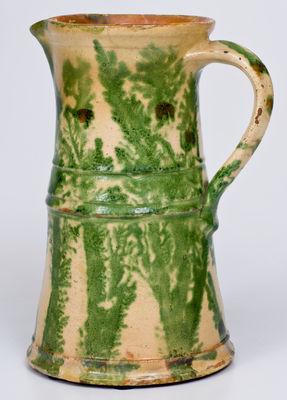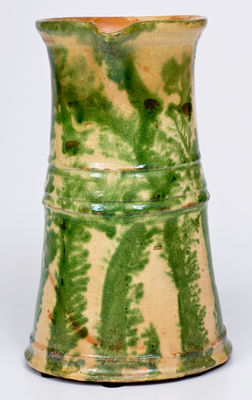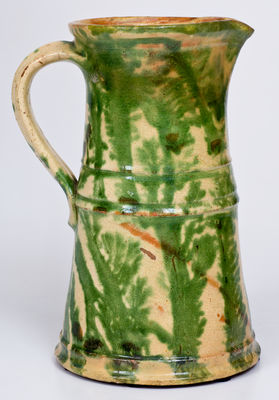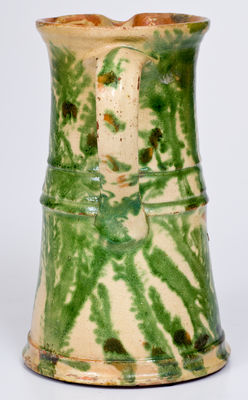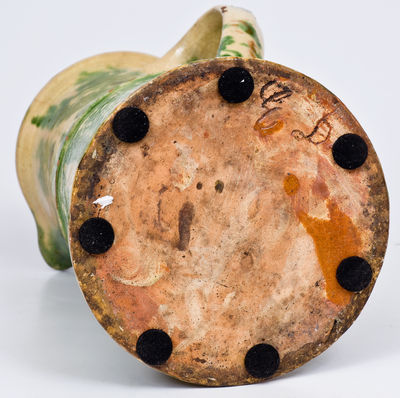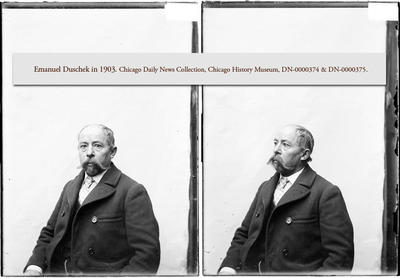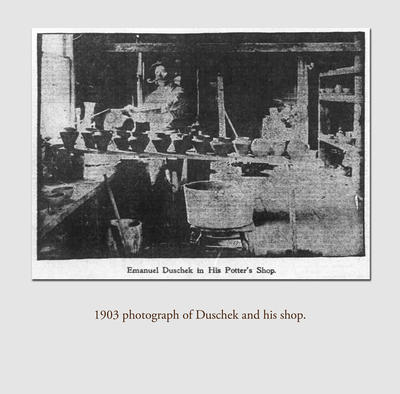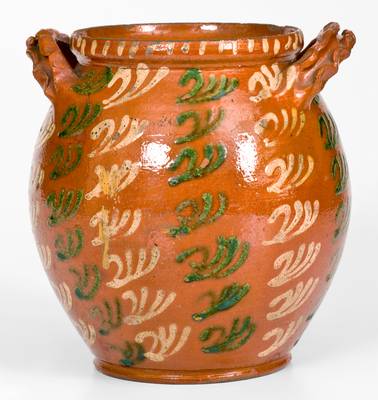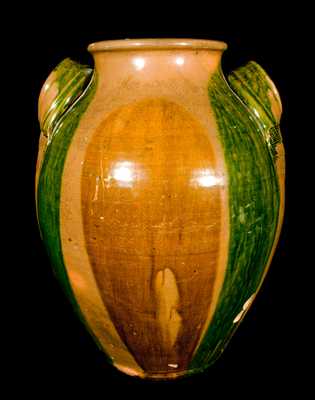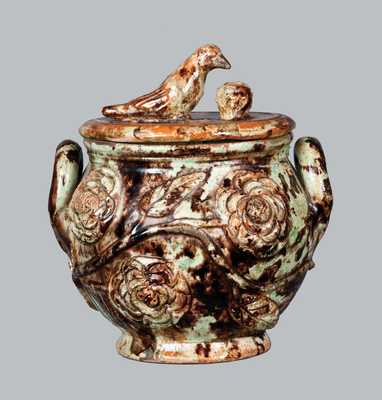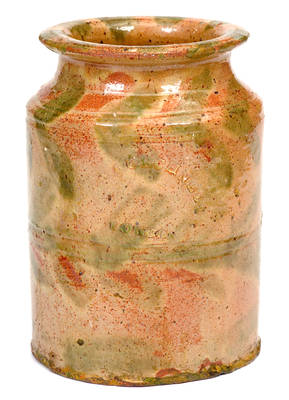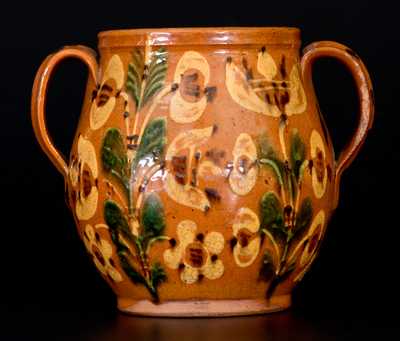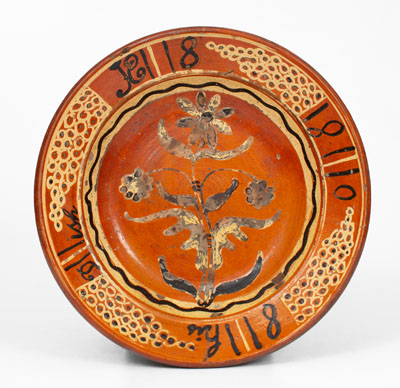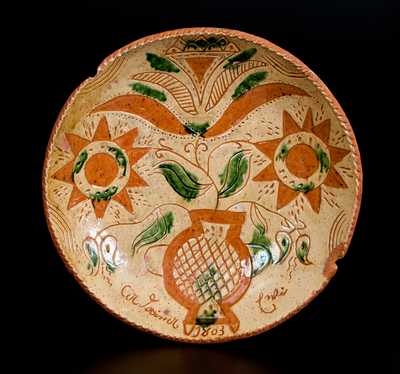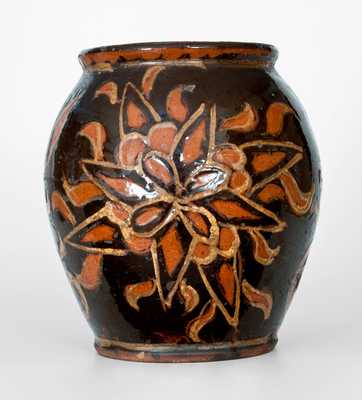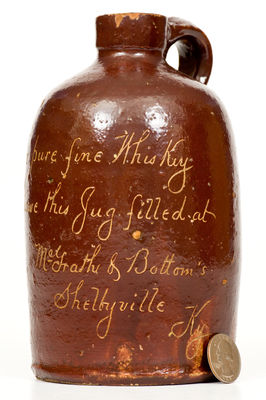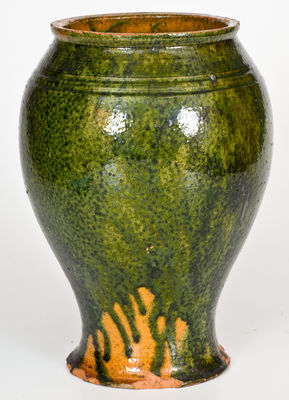Rare Redware Pitcher with Copper-Slip Mocha Seaweed Decoration, Incised "E.D.," Emanuel Duschek, Chicago, IL, circa 1900, tankard-form pitcher with flared base and tooled midsection, the surface dipped in cream-colored slip, profusely-decorated with copper seaweed motifs in the English mocha style, and covered in a clear lead glaze. Underside incised with the script initials "E.D." for Emanuel Duschek, an important Chicago potter for whom no work has been previously identified. Born in or about 1852 in Bohemia (Austrian Czechoslovakia), Duschek immigrated to the United States in 1883; the passenger list of his ship into New York lists him as a "potter." He arrived in Chicago by 1888, when he married his wife, Mary, who herself had come from a family of potters and is described in period accounts as heavily involved in the development of the pottery and in the production process. Duschek's pottery appears for the first time in the following year's Chicago city directory. By the earliest years of the 20th century, Duschek would take on almost folk hero status in the city, his name appearing in numerous newspaper items and advertisements of the time. Perhaps the most interesting of these is a 1903 story in the local Inter Ocean headlined "King of Chicago Potters." In it, Duschek is pictured in his shop with numerous recently-thrown vases upon a board; extoling the potter's skill and the operation he ran alongside his wife, the author accentuated Duschek's Austrian accent as he quoted him multiple times: "I can make mit my hands anyt'ing I see, and I t'ink prettier than I ever saw." By this time Duschek was supplying large quantities of pottery to local department stores, who advertised them regularly with ads like this January 1903 one: "New and artistic pieces from the pottery of Emanuel Duschek will be given a wide representation during the remainder of the month. Each piece, being modeled and turned by hand, possesses a peculiar uniqueness and individuality. The varied shapes embody many pleasing and original ideas of rare artistic merit. Rich shades of green predominate." Indeed, Duschek's green glaze, as seen on both of the examples in this auction, is referenced numerous times in primary documentary sources; one 1912 article claimed that the person responsible for glazing the ware was Mary Duschek, "whose artistic touch and experiments with coloring have won for her the sole right in the household to attend to the glazing," her "Secret Process." Indeed, a 1910 article in the Chicago Tribune written to highlight "Successful Business Women" profiled her and claimed, among other boasts about the couple's large output, that schools as far away as the west coast were routinely using the couple's pottery as models for art students. In 1912, Emanuel Duschek was selected to exhibit at the massive International Clay Products Exposition held at the Chicago Coliseum, which drew the chief American potteries of the day from the east and west coasts and in between, and was visited by President Taft. The examples in this auction perhaps date to the nineteenth century; while a glaze resembling that seen on the pitcher appears on one vessel pictured in the aforementioned 1903 article, his work by that time seems to have moved more toward common art pottery forms of the day. Indeed, in keeping with his heavy supplying of local department stores, he was even producing decorative oil lamps. Emanuel Duschek died in 1921 and across the ensuing decades has fallen more or less completely out of the history of American ceramics. (Mary Duschek died in 1916.) These are the first two identified pieces of his work to ever be sold at auction to our knowledge. Areas of restoration to rim, spout, and base. Minor surface wear. H 9 3/4".

